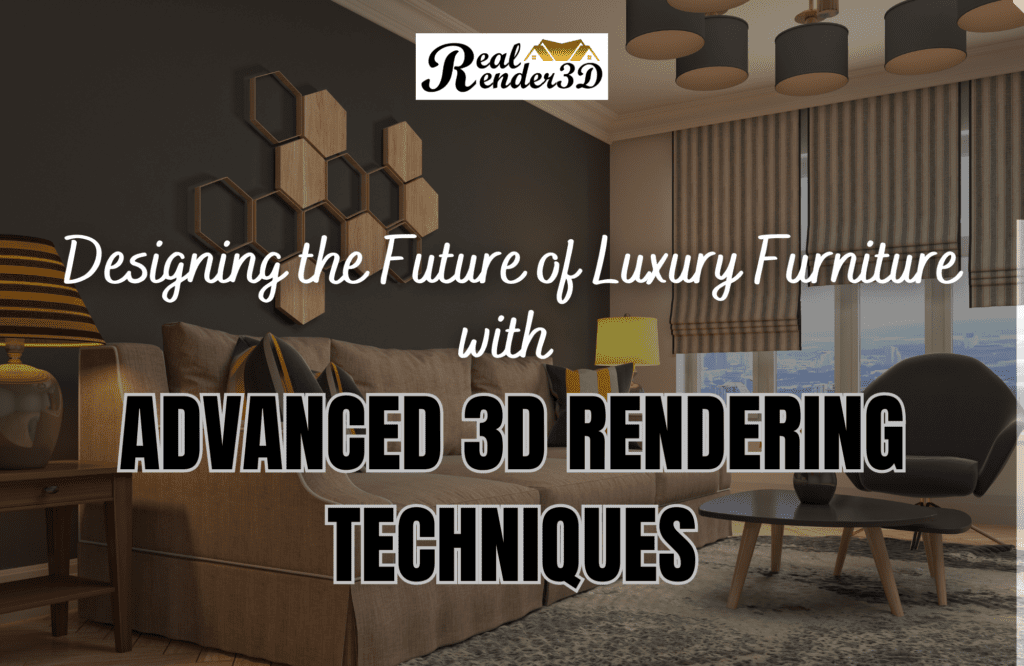Introduction to Advanced 3D Rendering Techniques
In the realm of luxury furniture design, advanced 3D rendering techniques have revolutionised the way designers conceptualise and create high-end pieces. Utilising these techniques allows for a level of detail and precision that traditional methods simply cannot achieve.
The Evolution of Furniture Design
Furniture design has undergone significant transformations over the decades. Traditional methods relied heavily on manual sketches and physical prototypes, which were time-consuming and costly.
Today, the integration of 3D rendering services has streamlined these processes, enabling designers to bring their visions to life with remarkable accuracy and efficiency. The impact of technology on design evolution is profound, making it easier to meet the demands of modern consumers who seek both beauty and functionality in their furniture.
Benefits of 3D Rendering in Luxury Furniture Design
The benefits of 3D rendering in luxury furniture design are manifold:
Enhanced Visualisation and Detail: 3D rendering allows designers to create photorealistic images of furniture pieces, showcasing intricate details and finishes that are often difficult to capture through traditional methods.
Streamlined Design and Production Processes: By using 3D interior rendering services, designers can quickly iterate on designs, reducing the time and cost associated with physical prototypes.
Customisation and Personalisation Capabilities: Advanced rendering techniques enable designers to offer bespoke solutions tailored to individual client preferences, enhancing the overall appeal and exclusivity of luxury furniture.
Key 3D Rendering Techniques for Luxury Furniture
Several key techniques are integral to the success of 3D rendering in luxury furniture design:
- Photorealistic Rendering: This technique produces images that are virtually indistinguishable from real photographs, allowing clients to see exactly what their finished piece will look like.
- Virtual Reality Integration: VR house tours and virtual reality experiences provide an immersive way for clients to explore and interact with furniture designs before they are produced.
- Augmented Reality Applications: AR allows clients to visualise how a piece of furniture will look in their space, enhancing the decision-making process.
The Role of 3D Rendering Software in Design
The effectiveness of 3D rendering services is heavily reliant on the software used. Popular 3D rendering software such as AutoCAD, 3ds Max, and Blender offers a range of features that enhance the design process. These tools provide designers with the ability to create detailed and accurate models, simulate different materials and lighting conditions, and produce high-quality visualisations that are essential for luxury furniture design.
Challenges and Solutions in Implementing 3D Rendering
Despite its advantages, implementing 3D rendering in furniture design comes with its own set of challenges. Common obstacles include the steep learning curve associated with advanced software and the initial investment required for high-quality rendering tools. However, these challenges can be mitigated through targeted training programmes and strategic investments in technology, ensuring that designers can fully leverage the capabilities of 3D rendering.
Future Trends in Luxury Furniture Design with 3D Rendering
As technology continues to advance, the future of luxury furniture design looks promising. Emerging technologies such as augmented reality and artificial intelligence are set to further enhance the capabilities of 3D rendering, making the design process even more interactive and efficient. Predictions for the future include the increased use of AR in design presentations and the integration of AI to optimise design workflows and material selection.
Conclusion
In conclusion, the use of advanced 3D rendering techniques is revolutionising the luxury furniture design industry. By enabling enhanced visualisation, streamlining production processes, and offering unparalleled customisation options, 3D rendering is set to play a crucial role in the future of furniture design. As designers continue to adopt and innovate with these technologies, the possibilities for creating stunning, bespoke luxury furniture are endless.
Frequently Asked Questions
1. How does 3D rendering enhance the design process for luxury furniture?
3D rendering enhances the design process by providing photorealistic images and detailed visualisations, allowing designers to accurately depict intricate details and finishes, streamline prototyping, and offer customised design options.
2. What are the main benefits of using 3D rendering services in furniture design?
The main benefits include improved visualisation, reduced time and costs associated with physical prototypes, the ability to create bespoke designs, and enhanced client presentations through virtual and augmented reality experiences.
3. Can 3D rendering software simulate different materials and finishes?
Yes, 3D rendering software can simulate a wide range of materials and finishes, enabling designers to experiment with various options and present clients with accurate representations of the final product.
4. How does virtual reality integration impact the client experience in luxury furniture design?
Virtual reality integration allows clients to experience and interact with furniture designs in an immersive environment, providing a deeper understanding of the design and helping them make more informed decisions.
5. What challenges might designers face when implementing 3D rendering techniques?
Common challenges include the initial investment in high-quality rendering tools, the learning curve associated with advanced software, and the need for specialised training to fully utilise the technology.
6. How can augmented reality be used in the luxury furniture design process?
Augmented reality can be used to overlay digital models of furniture into real-world environments, allowing clients to see how a piece will look in their space and make adjustments before production.
Alex Smith is a content writer at RealRender3D, writing informative articles on 3D rendering, interior design, architecture, and related topics.
With over 15 years of experience at top UK architecture and interior design firms, Alex leverages his expertise to write engaging content educating readers on AEC industry trends and best practices.
Connect with Alex at alex@realrender3d.co.uk.
